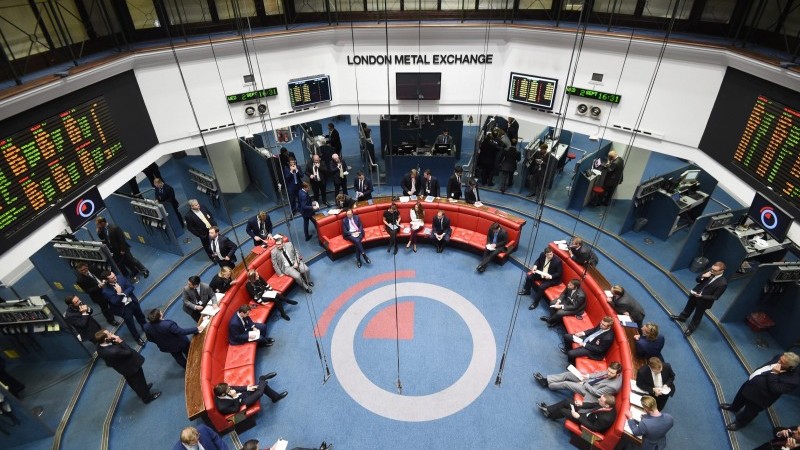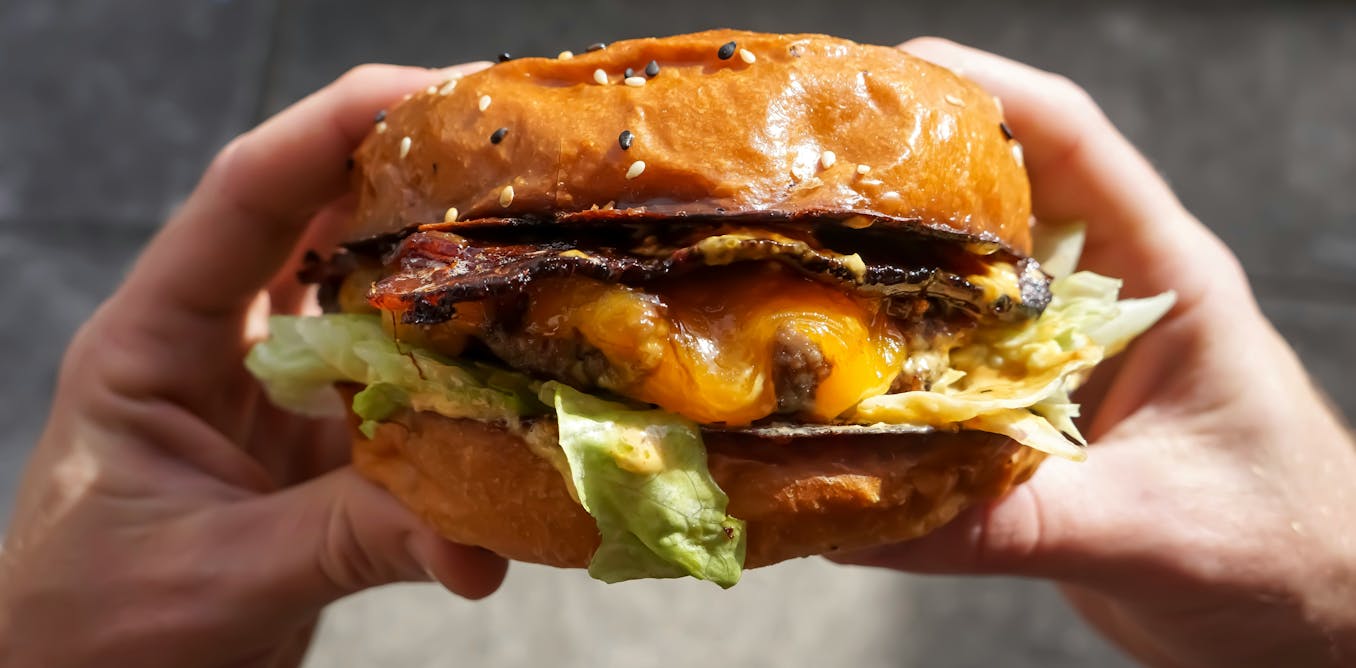Elizabeth Olsen is sharing her passion for moviemaking and, in a recent interview, explained why seeing films in a theater is essential.
The actress recently mentioned that she would rather star in films that get theatrical…

Elizabeth Olsen is sharing her passion for moviemaking and, in a recent interview, explained why seeing films in a theater is essential.
The actress recently mentioned that she would rather star in films that get theatrical…

Gold drew attention during LME Week, with prices up by around 60% this year. The rally has been driven by uncertainties over global trade, heightened geopolitical tensions, US fiscal stability and the Fed’s independence. The start of the Fed’s easing cycle also boosted gold, which doesn’t pay any interest. The rally has been driven by physical buying, with central banks and private investors accumulating gold at record volumes.
But after a weeks-long rally that saw the precious metal hitting successive record highs, gold slid the most in 12 years this week. This signalled that some momentum might have been stretched. Gold was dragged down by a combination of factors, including profit-taking across precious metals, easing seasonal demand from Diwali, positive trade talks between China and the US, uncertainty over investor positions amid the US government shutdown, and a stronger dollar. The pullback underscores the risk that the rally might have moved ahead of underlying fundamentals.
But despite this sharp pullback, gold’s outlook remains constructive, underpinned by macro uncertainty and diversification demand.
The shift in central banks’ purchases has been structural, with the pace of buying doubling in 2022 following Russia’s invasion of Ukraine. Central banks’ appetite for gold is driven by concerns from countries about Russian-style sanctions on their foreign assets, as well as shifting strategies on currency reserves. The top year-to-date buyer has been the National Bank of Poland, and it just announced it aims to increase its reserves from 21% to 30%.
ETFs have been another powerful force behind gold’s record-breaking rally this year, with holdings surging in recent weeks. In fact, gold ETFs have added as much gold in September alone as central banks did during the first quarter of this year combined, according to the World Gold Council. With ETF holdings still shy of a peak hit in 2022, there could be room for further increases.
The downside should be limited, supported by geopolitical concerns, sustained central bank demand and expectations of further monetary easing, although near-term volatility may persist. For now, gold’s pullback looks like a healthy correction within a still-positive trend.

Here you’ll find a list of hotfixes that address various issues related to World of Warcraft: The War Within, Mists of Pandaria Classic, Season of Discovery, WoW Classic Era, and Hardcore. Some of the hotfixes below take effect the moment they…

Follow ZDNET: Add us as a preferred source on Google.

Ready for an extended journey to a galaxy far, far away?
Deadline has compiled a list of all the Star Wars franchise movies and TV shows in chronological order, so you can be sure to keep your timeline relatively straight. (It will…

As the first-ever three-row SUV in the IONIQ lineup, the IONIQ 9 left a lasting impression during its global debut in Los Angeles. Guests and members of the international press were immediately impressed by the IONIQ 9’s aerodynamic design, commanding presence, and outstanding electric performance.
The IONIQ 9 breaks boundaries in many ways: exterior design elements, such as its sleek silhouette, tapered boat-tail form, and smooth, single-curved roofline, demonstrate a new aerodynamic architecture and bold design step. But where the concept of bringing people together is most on display is IONIQ 9’s cozy and interaction-enhancing interior. Once inside, both drivers and passengers are greeted with a roomy, harmonious space that feels more like a luxurious lounge than a car cockpit. Soothing colors, innovative materials, and ride-enhancing technology come together to create a unique atmosphere that people want to interact in.

New York Bridal Fashion Week Fall 2026 was packed with hundreds of gowns, minis, and sets that will be filling bridal salons and showrooms next spring. Every designer brought their own perspective, providing to-be-weds of every sartorial leaning…

Imagine you’re at the grocery store, standing before a selection of snacks. Seemingly without thinking, you skip over the rice crackers to pick out a bag of chips.
These types of choices are called dietary decisions. It’s how we consider many different aspects of a food – including tastiness, healthiness and price – in order to decide what to buy and what to eat.
It’s not well understood how our brains use all these different bits of information when making food choices. When does information about each aspect of the food become available to our brains to consider? That’s what we set out to investigate.
In our new paper published in the journal Appetite, we show how, just hundreds of milliseconds after we have seen a food, many different attributes are reflected in brain activity. This happens extremely fast, long before a person can consciously decide whether or not to buy or eat the food.
Naturally, how fast our brains process the different aspects of foods will affect our dietary decisions.
For example, studies have reported that we may process how tasty we find a food more quickly than how healthy it is. This quirk can bias our choices toward foods that taste better over those that are healthier. Junk foods – tasty but not necessarily good for us – have an edge here.
To investigate how quickly we process different aspects of foods, we used electroencephalography, a method that allows us to record electrical brain activity with millisecond precision.
We recorded people’s brain activity while showing them images of various foods, such as snack items, meats, fruits and sweets. We also asked people to rate each food on many different aspects, such as healthiness, tastiness, calorie content, familiarity, and how much they would like to eat the food.
We then used machine learning techniques to compare patterns of brain activity (how different the brain responses were to different food items) with the patterns of ratings (how differently those foods were rated).
This allowed us to test whether foods that had the largest differences in ratings also had the largest differences in brain activity. In other words – was information about food attributes actually reflected in people’s brain activity?
As it turned out, it was.
Information about different aspects of foods, such as healthiness, calorie content and familiarity, were reflected in the brain activity as early as 200 milliseconds after the food image was presented on the screen.
These rapid brain responses occurred before people could be consciously aware of the food they were seeing. Other aspects of foods, such as tastiness and willingness to eat the food, were reflected in the brain activity slightly later.
These findings suggest that various aspects of foods may grab our attention early and help guide our dietary decisions. The brain assesses many different aspects of foods automatically and with similar timing, shaping our food choices before we’re even aware of them.
Surprisingly, we found that the healthiness of foods was represented in the brain activity earlier than tastiness. While this contradicted some previous findings, our machine learning techniques may have been more sensitive to detect subtle patterns of brain activity associated with each attribute.
There were also similarities in the way people judged different aspects of a food. For example, foods that were less familiar were also rated as being less tasty.
From these patterns of similarity, we identified two key food dimensions that may be particularly important when our brains evaluate foods. The first one is the “processed” dimension: how natural or processed a food is. The second is the “appetising” dimension, which taps into how tasty and familiar we find a food.
Both were reflected in patterns of brain activity very rapidly, about 200ms after seeing a food item.
Our findings are most relevant to situations where we only rely on the visual features of foods, such as when ordering groceries or meals online, or using a picture menu at a restaurant. They shed light on how people make snap judgements at the supermarket or on food delivery apps.
Our brain imaging approach can also be used to test if certain strategies, such as deliberately focusing on the healthiness of foods, might change how foods are rapidly appraised and help us improve our choices.
While we used food images in this study, other senses are also important for dietary decisions. Smelling a mango or hearing the sizzle of a frying burger patty are likely processed quickly by the brain as well.
The next step will be to look into these other sensory features of foods, to see how the brain processes not just images of food, but the real deal when placed in front of us.